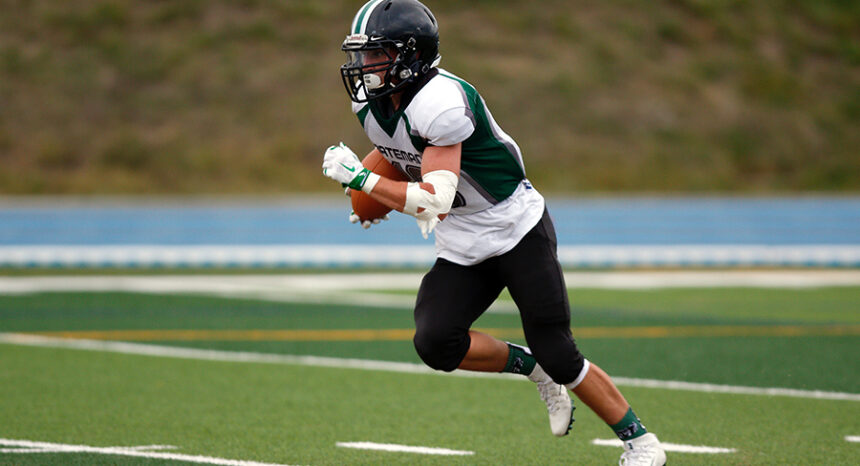For many Americans, football is quintessential to the high school experience. But researchers have begun to worry about long-term risks from the violent blows and concussions players receive on the field. Many questions remain unanswered, but the findings are so serious that some former players are calling for a ban on the sport.
Football players are not the only athletes who face risks, of course. Hockey, lacrosse and other sports can also lead to head injuries. But tackle football is the most popular high school sport in America, with over 1 million participants a year, according to the National Federation of State High School Associations, an intramural rules-making body.
And football players suffer more concussions than any other high school athletes, according to a 2017 study in the Journal of Athletic Training. During a game, football players are 16 times more likely to suffer a concussion than baseball players and four times more than male basketball players. (For girls, the study found soccer to be the most dangerous high school sport, followed by lacrosse.) According to the Centers for Disease Control and Prevention (CDC), 2.4 high school football players die per year due to traumatic head injuries.
A concussion is a type of brain injury that often results in a temporary loss of consciousness. According to the National Institutes of Health, a concussion “happens when a hit to the head or body causes your head and brain to move rapidly back and forth. This sudden movement can cause the brain to bounce around or twist in the skull, creating chemical changes in your brain. Sometimes it can also stretch and damage your brain cells.” A 2017 paper in the Annals of Neurology finds that a concussion in adolescence is associated with a higher risk of developing multiple sclerosis later.
Repeated concussions may cause chronic traumatic encephalopathy (CTE), a neurodegenerative disease that can only be diagnosed during an autopsy, and which has been associated with memory loss and depression in former football players. Post-concussion syndrome and traumatic brain injury (a severe concussion) are related conditions. Former New England Patriots player Aaron Hernandez, who killed himself in 2017 at age 27 while serving time for murder, was found after his death to have had a severe case of CTE. A 2017 study in the Journal of the American Medical Association (JAMA) found evidence of CTE in 110 of 111 deceased National Football League players. (That study has been criticized because the brains were donated by family members concerned about their deceased loved one’s health; the findings may not be representative of all football players.)
Yet a longitudinal 2017 study of almost 4,000 high school football players finds no relationship between playing football and cognition or mental health later in life, when the men were 65. This study, likewise published in JAMA, also stressed the trade offs — that sportiness has health benefits: Men who had played football in high school were more physically active at age 35 than non-players.
Many questions remain. Could the risks of football be growing? Players these days are bigger and stronger than they were in the 1950s and ‘60s, according to a 2017 study in the Mayo Clinic Proceedings. But protective gear today is more sophisticated (though a poorly fitting helmet can increase the severity of concussions).
Then again, some researchers have suggested that better gear could be changing how the game is played, causing players to “lead with their heads,” increasing their chances of a concussion. The CDC has also raised that concern.
More research is needed. With a million young men actively engaged on the field, football’s risks are bound to attract attention. The peer-reviewed research cited below includes some of the latest findings.
Citations:
- Collins, Christy L.; et al. “Concussion Characteristics in High School Football by Helmet Age/Recondition Status, Manufacturer, and Model.” The American Journal of Sports Medicine, 2016. DOI: 10.1177/0363546516629626.
- Deshpande, Sameer; et al. “Association of Playing High School Football With Cognition and Mental Health Later in Life.” Journal of the American Medical Association, 2017. DOI: 10.1001/jamaneurol.2017.1317.
- Greenhill, Dustin; et al. “Inadequate Helmet Fit Increases Concussion Severity in American High School Football Players.” Sports Health, 2016. DOI: 10.1177/1941738116639027.
- Janssen, Pieter; et al. “High School Football and Late-Life Risk of Neurodegenerative Syndromes, 1956-1970.” Mayo Clinic Proceedings, 2017. DOI: 10.1016/j.mayocp.2016.09.004.
- Kucera, Kristen L.; et al. “Traumatic Brain and Spinal Cord Fatalities Among High School and College Football Players — United States, 2005-2014.” Morbidity and Mortality Weekly Report, 2017. DOI: 10.15585/mmwr.mm6552a2.
- Mez, Jesse; et al. “Clinicopathological Evaluation of Chronic Traumatic Encephalopathy in Players of American Football.” Journal of the American Medical Association, 2017. DOI: 10.1001/jama.2017.8334.
- Montgomery, Scott; et al. “Concussion in Adolescence and Risk of Multiple Sclerosis.” Annals of Neurology, 2017. DOI: 10.1002/ana.25036.
- O’Connor, Kathryn L.; et al. “Epidemiology of Sport-Related Concussions in High School Athletes: National Athletic Treatment, Injury and Outcomes Network (NATION), 2011–2012 Through 2013–2014.” Journal of Athletic Training, 2017. DOI: 10.4085/1062-6050-52.1.15.
- Weihong, Yuan; et al. “Neck Collar with Mild Jugular Vein Compression Ameliorates Brain Activation Changes During a Working Memory Task After a Season of High School Football.” Journal of Neurotrauma, 2017. DOI: 10.1089/neu.2016.4834.


Expert Commentary